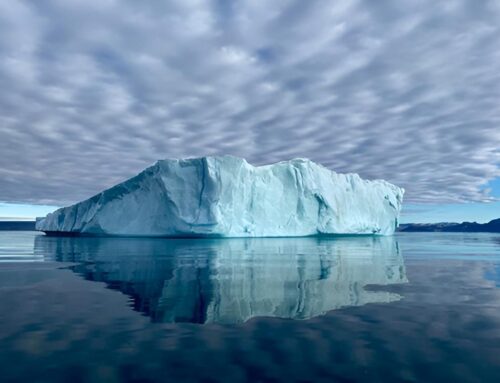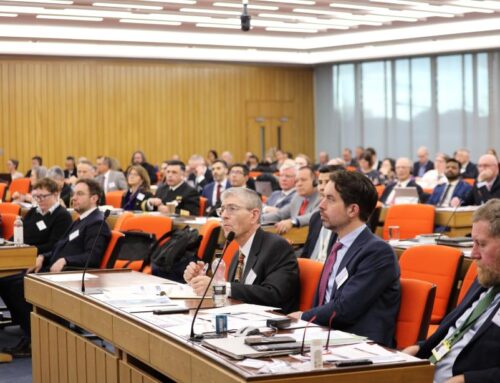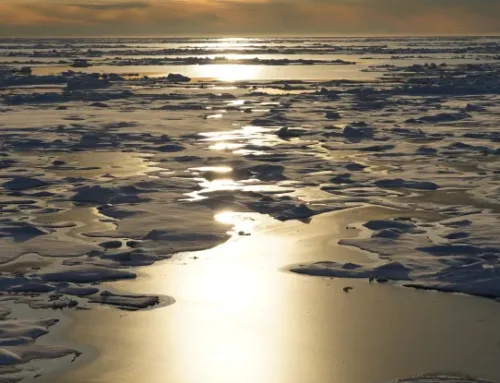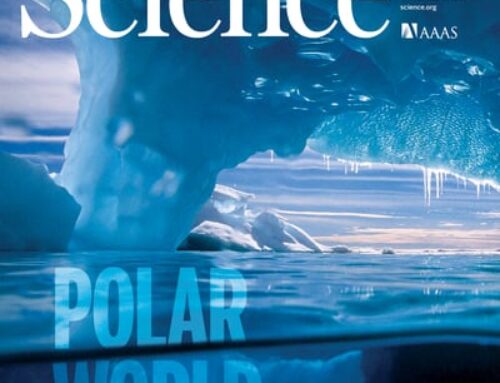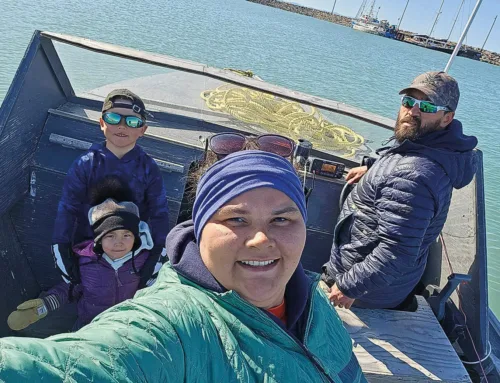This spring, MEOPeers Jenna Joyce and Annika Ogilvie studied techniques for remote sensing of ice and snow at the University Centre in Svalbard (UNIS), Norway, techniques they will apply to their MEOPAR-funded research on shipping in the Canadian Arctic.
In March, Joyce and Ogilvie flew into the Norwegian archipelago of Svalbard. Located halfway between mainland Norway and the North Pole, Svalbard is home to UNIS, the northernmost higher education institution in the world. The two master’s students from the University of Ottawa’s Environment, Society and Policy group were enrolled in a five-week course on studying the frozen parts of the planet, from a distance.
The general technique is called remote sensing, and involves collecting photographic, topographic or other types of data – most often from satellites or aircraft. Remote sensing imagery gives researchers a broad view of an area, one that may not be possible through ground measurements, and it often offers a large volume of high-resolution data to work with. It also gives researchers the ability to study inaccessible and inhospitable places, like much of the Canadian Arctic.
“UNIS is known for their advanced courses in Arctic studies and especially for the field component of each course,” said Joyce. The comprehensive remote sensing training is particular to UNIS, which is in a relatively developed and accessible Arctic location, she explained.
The course covers remote sensing techniques for studying changes in sea ice, glaciers, ice sheets, and snow cover. And each topic is taught by an expert in that field. Because UNIS is so far north – it is located within the Arctic Circle – its students have the opportunity to take direct measurements used to check the accuracy of their remotely sensed data.
“It was something we were both very interested in, because going to Svalbard, for an Arctic researcher, is an incredible experience,” said Ogilvie. “I do satellite imagery analysis, so normally I’m at a computer looking at imagery of the Arctic and don’t have the opportunity to go up there and see those landscapes in person.”
Joyce and Ogilvie will apply what they learned in Svalbard to their research on shipping in the Canadian Arctic. Ogilvie’s interest is in predicting the development of pressured ridges, ice formations that are dangerous to vessels. Joyce is identifying ecologically, biologically and culturally sensitive marine regions, which can be used to inform policy around shipping corridors through the Northwest Passage.
The students’ research is part of the MEOPAR-funded Arctic Marine Activities Integration and Synthesis (AMAIS) project, led by Dr. Jackie Dawson, the Canada Research Chair in Environment, Society and Policy (University of Ottawa). The project is one of nine research projects funded through MEOPAR’s partnership with Irving Shipbuilding Inc. Find out more about MEOPAR’s AMAIS project here.

